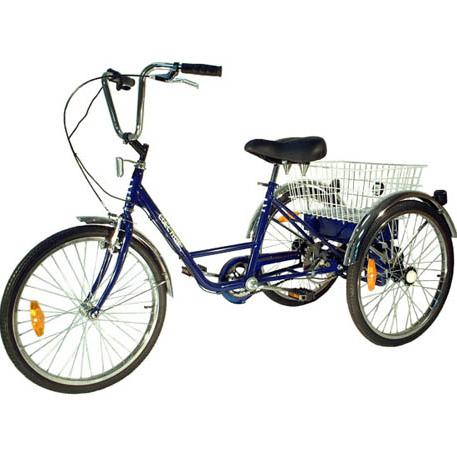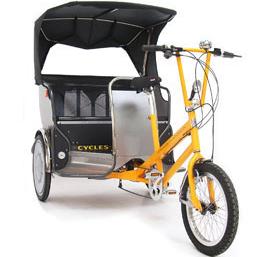I know at first this story won’t seem to have much to do with the post that follows, but I wanted to lose weight one day. I did not need to. I am 6’3″ and 180 pounds. (blush on my drivers license it says 165) So I cut back on ye old intake. All I really wanted to do was drop 5 lbs. to 175 because my pants were getting a little tight in the waste (sorry waist). In a couple of weeks I got down to 176 lbs. I got distracted. An environmental issue got hot and I just lost track. When I got back to thinking about how much I weighed, I got on the scales and I weighed 180.5 lbs. In a week even though I cut down some I was at 182! In was then that I became very aware of the theory of “set points” and what happens when you disturb them…
Anyway you must remember the No Impact Guy…I did a post on him last year:
http://noimpactman.typepad.com/
Graham Hill, founder of Treehugger.com, is participating in No Impact week, starting October 18, and he wrote on the Huffington Post:
Instead of edicts – depriving you of your car or forbidding drinking your latte from a paper cup – the No-Impact week brought to you by Colin Beavan and Huff Po is instead the opportunity to try out lifestyle strategies that just may be more fun than you thought.
With the shape of the earth and our complex society, we need lots of people coming up with lots of approaches.
I look at No-Impact week as carbon-cleansing experiment in which I get to see which of my lifestyle choices actually contribute to my happiness.
He’s right of course! So join in!
Meanwhile, we’ll be having online video conversations every night of the week starting on Sunday at 5 PM EST, so tune in below. Sunday’s chat will be with Wood Turner of Climate’s Count on the topic of consumption and Monday’s (at 9PM EST) will be with Bill McKibben of 350 and Betsy Taylor of 1Sky on the topic of trash.
Hope to see you there.
:}
He had his own blog and organization that the Huffington Post helped start:
What is No Impact Project?
The No Impact Project is an international, environmental, nonprofit project, founded in the spring of 2009. It was inspired by the No Impact Man book, film, and blog.
Mission
To empower citizens to make choices which better their lives and lower their environmental impact through lifestyle change, community action, and participation in environmental politics.
The No Impact Project was conceived by Colin Beavan, aka No Impact Man, following the success of his blog, book, and film, which chronicle his family’s year-long experiment living a zero-waste lifestyle in New York City. Central to his thesis is the notion that deep-seated individual behavior change leads to both cultural change and political engagement. Living low-impact provides a clear entry point into the environmental movement. This thesis is the bedrock of the No Impact Project.
Goals
- Promote behavioral change
- Enable the public to experience their own No Impact Experiment
- Engage people who are not already tree-hugging, bicycle-riding, canvas-bag-toting, eco-warriors
:}
He Got a documentary out of it
http://www.imdb.com/title/tt1280011/
No Impact Man: The Documentary
MOVIEmeter: 
Down 23% in popularity this week. See why on IMDbPro.
Directors:
Laura Gabbert
Justin Schein
Contact:
View company contact information for No Impact Man: The Documentary on IMDbPro.
Genre:
Documentary
Tagline:
Saving the world, one family at a time.
Plot:
Follow the Manhattan-based Beavan family as they abandon their high consumption 5th Avenue lifestyle and try to live a year while making no net environmental impact. | add synopsis
NewsDesk:
Oscilloscope Laboratories plans on Making an ‘Impact’
:}
Then a book.. or was it the book then the documentary?
http://festival.sundance.org/2009/film_events/films/no_impact_man
NO IMPACT MAN
Then Colin turns things upside down. For his next book, he announces he’s becoming No Impact Man, testing whether making zero environmental impact adversely affects happiness. The hitch is he needs his wife, Michelle—an espresso-guzzling, Prada-worshipping Business Week writer—and their toddler to join the experiment.A year without electricity, cars, toilet paper, and nonlocal food isn’t going to be a walk in the park
:}
Then he got phat:
http://www.msnbc.msn.com/id/33357744/ns/us_news-environment/
After year without, family finds middle ground
No TV? Toilet paper? Perceived sacrifices end up being nothing of the sort
Letting go
When the year was over, Conlin and Beavan didn’t want to set any more rules for themselves. After all the restrictions, they wanted to finally let it all go and see what felt right.
Mostly, they stuck to buying their food at the farmer’s market. But if they were short on groceries after a late night at work, they would stop at the supermarket — despite the packaging on the food on the shelves, despite the distance it had traveled.
While the amount of garbage they produced increased from a single quart every four days to five gallons, this was a far cry from the 90 gallons they produced before the experiment. Their refrigerator is back on, but their freezer is gone.
from the 90 gallons they produced before the experiment. Their refrigerator is back on, but their freezer is gone.
They started buying olive oil and some seasonings, even though they’re not made nearby. They began saying yes when friends invited them out to dinner. And they started using toilet paper again — but now it was made from recycled paper.
Neither of them wanted to bring back their giant, 46-inch TV. But once a week or so, if they’re in the mood, they’ll watch a drama on a laptop.
It was an obvious choice to keep the rickshaw bikes they’d come to love — three-wheelers with space for groceries and a seat for Isabella. But now, when it rains, they sometimes take the subway.
The air conditioners once seemed like a necessity. But take them away, and the heat and the lack of electronic entertainment drove the family outside, where they spent most evenings at the fountain at Washington Square Park. They cooled off in the mist of the fountain, looked around at the virtual circus of performers who have made the public plaza their stage. They talked with neighbors.
No longer hunkered down in their family’s lonely bubble, they were out in the city. They loved
:}
So there are HUGE journalist temptations here. MSNBC take the “regaining there balance” approach like they were some extremists and now they have come more to the middle of the road. There are other approaches…like to “laugh and say they were destined to fail”. Or like they do with Ed Begley jr. and twitter like his wife, “isn’t he just the oddest sort”
But fresh off my bout with weight loss I say “way to go” on a tough test, and congratulations on not rebounding too far.
:}


 The Low Impact Development Center was established in 1998 to develop and provide information to individuals and organizations dedicated to protecting the environment and our water resources through proper site design techniques that replicate pre-existing hydrologic site conditions.
The Low Impact Development Center was established in 1998 to develop and provide information to individuals and organizations dedicated to protecting the environment and our water resources through proper site design techniques that replicate pre-existing hydrologic site conditions.
 You may have noticed that, as of today, electric vehicles account for a TINY percentage of all the cars, motorbikes, scooters and bicycles on sale.
You may have noticed that, as of today, electric vehicles account for a TINY percentage of all the cars, motorbikes, scooters and bicycles on sale.
 You see, my parents have insured me on their little Peugeot 207 diesel – and while that’s great – I have some ideas of my own for the future when it comes to car ownership.
You see, my parents have insured me on their little Peugeot 207 diesel – and while that’s great – I have some ideas of my own for the future when it comes to car ownership.
 So, is it possible to find a lively, good-looking, fuel-miserly set of electric wheels at this moment in time? If not, when? One year from now? Two years? By the time of my pension?
So, is it possible to find a lively, good-looking, fuel-miserly set of electric wheels at this moment in time? If not, when? One year from now? Two years? By the time of my pension?












